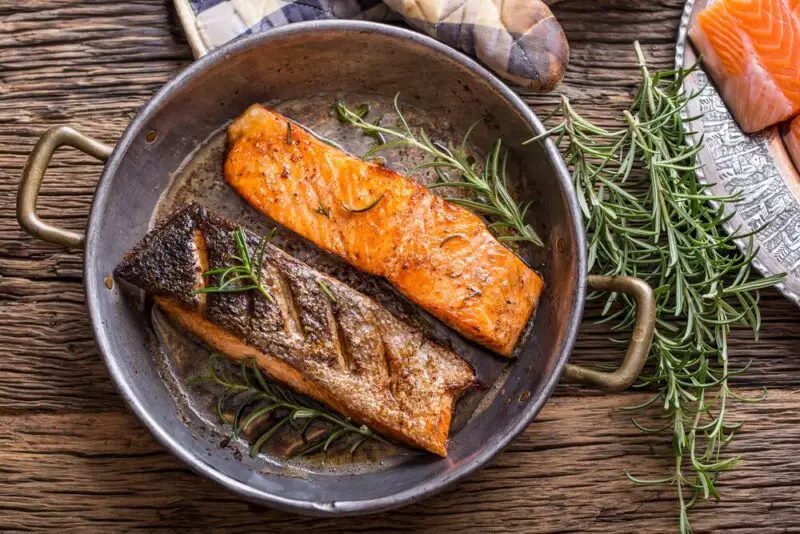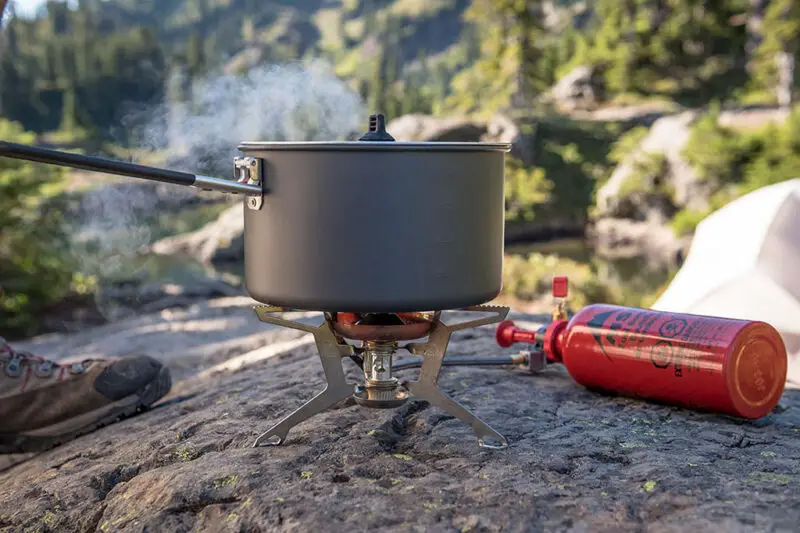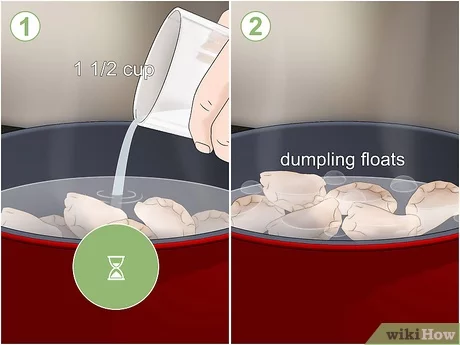Can You Get Food Poisoning from Cooked Salmon?
Salmon is a popular fish that’s enjoyed by millions of people across the world. It’s a healthy source of protein, omega-3 fatty acids, and other nutrients. However, like any other food, there are risks associated with consuming salmon. One of these risks is the possibility of getting food poisoning from cooked salmon, which can be caused by bacteria like Salmonella. In this article, we’ll take a closer look at the topic and provide you with information on how to safety enjoy salmon without risking your health.
Understanding Food Poisoning
Food poisoning is an illness that occurs after consuming contaminated food or drink. The symptoms can range from mild to severe and may include nausea, vomiting, diarrhea, abdominal pain, fever, and dehydration. The onset of symptoms can occur anywhere from a few hours to several days after consuming contaminated food or drink.
The causes of food poisoning can vary, but they often involve harmful bacteria like Salmonella, Listeria, E. coli, campylobacter, and others. These bacteria can contaminate food during different stages of the production process including preparation, storage, and serving.
In some cases, contamination can occur due to poor hygiene practices among those handling the food. This underscores the importance of good hygiene when handling food not only in commercial settings but also at home.
Types of Bacteria that Cause Food Poisoning
- Salmonella: One of the most common types of bacteria that cause food poisoning in people. It’s estimated that around 1 million cases of Salmonella infection occur in the US each year.
- Listeria: Listeria is another type of bacteria that can cause food poisoning. It’s often found in ready-to-eat foods and can be especially dangerous for pregnant women, older adults, and those with weakened immune systems.
- E. coli: Escherichia Coli (E. coli) is a type of bacteria that can cause food poisoning in people. In severe cases, it can lead to kidney failure.
- Campylobacter: Campylobacter is a type of bacteria that’s often found in raw poultry and can cause food poisoning in people. Symptoms may include diarrhea, cramping abdominal pain, and fever.
Salmon Safety
To reduce your risk of getting sick from eating salmon, it’s essential to follow proper safety practices. The following are some of the safety measures you should adhere to:
Overview of How to Safely Cook and Store Salmon
- Make sure salmon is cooked to an internal temperature of 145°F (63°C).
- Store salmon at a temperature below 40°F (4°C) to prevent bacterial growth.
- Cook salmon within two days of purchasing if it’s fresh; if frozen, use within six months of purchase date.
FDA Guidelines for Cooking and Serving Salmon
The US Food and Drug Administration (FDA) provides guidelines on how to safely handle and cook fish, including salmon. Here are some important guidelines you should follow:
- Serve fish while it’s still hot or reheat leftovers before serving.
- Clean all utensils, cutting boards, sinks, and cooking surfaces that come into contact with raw fish to prevent cross-contamination to other foods.
- When purchasing fish, ensure that it’s been properly labeled and kept under refrigeration until purchase. Fresh salmon should have clear eyes, moist skin, and a bright color.
How to Properly Handle Raw Salmon Before Cooking
Before cooking salmon, make sure to follow these guidelines:
- Wash your hands thoroughly with soap and water before handling salmon.
- Thaw frozen salmon in the refrigerator or microwave.
- Use different utensils and cutting boards for raw fish than for other foods and clean them well before and after use.
Possible Sources of Contamination
The most common sources of contamination for cooked salmon include:
- Processing: Contamination can occur during the processing stage if salmon is exposed to unsanitary conditions such as dirty equipment, untreated water or infected fish.
- Packaging: Salmon can become contaminated if it comes into contact with unsanitary packaging materials or if there’s a failure in the packaging process.
- Sourcing: The source of the salmon itself could also be a contributing factor in contamination.
One issue of high concern in the salmon industry today is antibiotic resistance. Salmon farming often involves treating fish with large doses of antibiotics to prevent or treat diseases. This overuse of antibiotics has contributed to antibiotic resistance, which means that antibiotics are less effective at fighting disease-causing bacteria over time. Antibiotic-resistance has become a growing public health threat worldwide. Efforts are being made globally to reduce the use of antibiotics in animals, including salmon.
Understanding Salmonella Infections
Salmonella infection can cause food poisoning and is often associated with raw or undercooked foods, including fish. It’s important to note that Salmonella can still be present even if the salmon appears fully cooked. Symptoms of a Salmonella infection may include:
- Fever
- Diarrhea
- Nausea and vomiting
- Abdominal cramps
- Headache
In severe cases, a Salmonella infection can lead to hospitalization or even death. Symptoms typically last for 4-7 days, but a full recovery could take several weeks in some cases.
If you suspect that you have a Salmonella infection, it’s essential to seek medical attention. Your healthcare provider will typically conduct tests to diagnose the illness and recommend treatment options based on your specific symptoms.
Examining the Risks
The risk of getting sick from cooked salmon is relatively low, but it does exist. According to the Centers for Disease Control and Prevention (CDC), there are around 1 million cases of foodborne illness due to Salmonella in the US alone each year. However, not all these cases are necessarily linked to consuming salmon. Specific risk factors can increase your risk of getting sick from eating salmon, including:
- Poor hygiene practices: If you don’t follow proper safety measures when handling and cooking salmon, you increase your risk of bacterial growth.
- Weak immune systems: Those with weakened immune systems, such as infants, elderly people or those with underlying medical conditions are more susceptible to food poisoning in general.
- Age: Young children and the elderly are at an increased risk of developing severe food poisoning symptoms.
- Undercooked salmon: Consuming undercooked or raw salmon increases your risk of contracting a Salmonella infection
Prevention and Treatment
To avoid getting food poisoning from cooked salmon, you should follow these safety tips:
Tips on Preventing Food Poisoning From Cooked Salmon
- Cook salmon to an internal temperature of 145°F (63°C).
- Store salmon at a temperature below 40°F (4°C) to prevent bacterial growth.
- Cook salmon within two days of purchasing if it’s fresh; if frozen, use within six months of purchase date.
- Clean all utensils, cutting boards, sinks, and cooking surfaces that come into contact with raw fish to prevent cross-contamination to other foods.
- Wash your hands thoroughly with soap and water before and after handling fish.
Information on Treating Salmonella Infections
If you develop a Salmonella infection and receive medical attention, your healthcare provider may prescribe antibiotics or another medication. It’s essential to stay hydrated during the recovery period by drinking plenty of fluids. Avoid taking over-the-counter medication like Imodium, which can slow down the elimination of bacteria from your body.
Steps To Take If You Get Sick From Cooked Salmon
If you suspect that you have consumed contaminated salmon and are experiencing symptoms of food poisoning, it’s important to take the following steps:
- Seek Medical Attention: Call your healthcare provider immediately if you experience severe symptoms such as bloody stools or intense abdominal pain.
- Record Symptoms: Keep a record of when your symptoms start and what they are so that your healthcare provider can diagnose the infection more effectively.
- Contact Health Officials: If you suspect that contaminated fish caused your illness, contact the appropriate health officials so that they can investigate the potential source of the contamination.
Conclusion
In conclusion, salmon is a healthy and nutritious food enjoyed by millions of people globally. However, it’s important to exercise caution when handling and cooking salmon to avoid the risk of getting sick from consuming contaminated fish. By following the safety tips outlined above, you can help keep yourself and your loved ones safe while still enjoying all of the nutritional benefits of this fantastic fish.
Resources
If you’re looking for more information on food safety and salmon practices, here are some reliable resources:
- The US Food and Drug Administration: https://www.fda.gov/food/new-evolving-food-technologies/safety-all-fish-reaching-finish-line
- The Centers for Disease Control and Prevention: https://www.cdc.gov/foodsafety/foods-linked-illness.html
- The World Health Organization: https://www.who.int/foodsafety/areas_work/antimicrobial-resistance/cia/en/
Can you get food poisoning from cooked salmon?
Absolutely, yes. Although cooking salmon can reduce the risk of foodborne illness, it cannot guarantee that harmful bacteria is eliminated entirely.
What are the symptoms of food poisoning from cooked salmon?
The symptoms of food poisoning from cooked salmon usually include nausea, vomiting, diarrhea, abdominal cramps, and fever. Symptoms can range from mild to severe and can last up to a week.
What causes food poisoning in cooked salmon?
Salmon can be contaminated with bacteria such as Salmonella, Listeria, or Vibrio even after being cooked. Improper handling and storage of cooked salmon can also result in bacterial growth and cause foodborne illness.
How can you prevent getting sick from cooked salmon?
To minimize the risk of getting sick from cooked salmon, make sure to cook it thoroughly to an internal temperature of 145°F. Also, practice proper handling and storage techniques for your fish. Store it in a clean container and refrigerate within two hours of cooking. Avoid cross-contamination by using separate utensils for raw and cooked foods.






